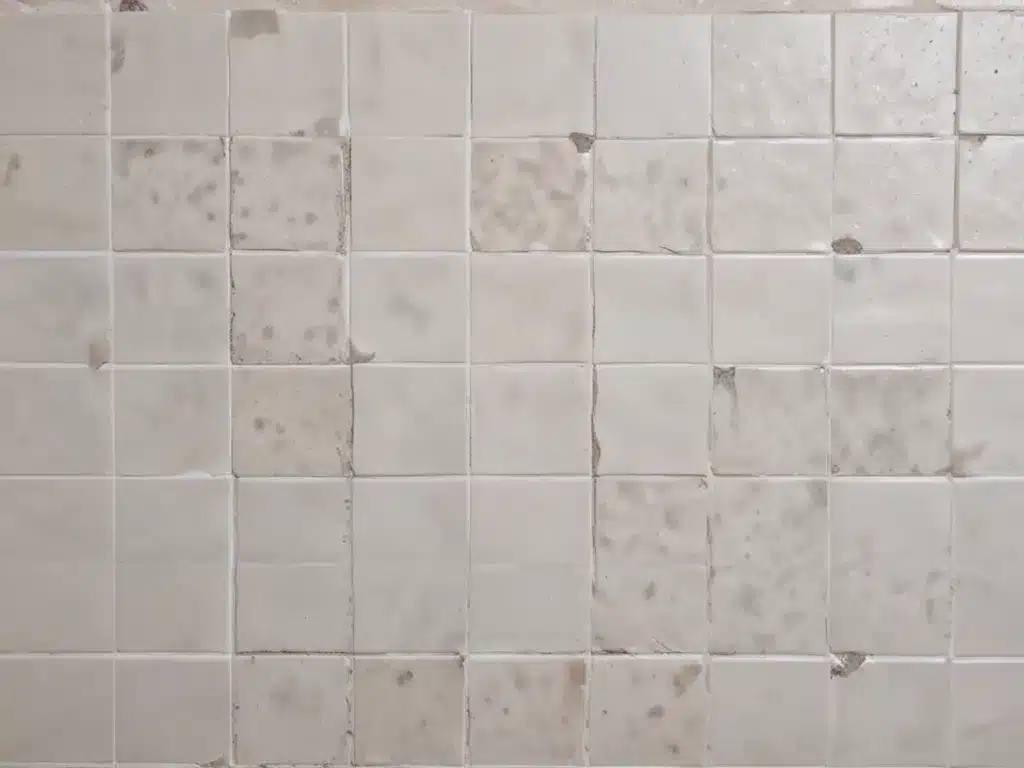Taking care of your tile floors and grout lines is important for maintaining their beauty and longevity. Grotty, stained, or cracked grout can make your whole floor look dirty and neglected. Thankfully, there are easy solutions to refresh your grout and keep your tiles looking like new.
Evaluate the Condition of Your Grout
The first step is to take a close look at the condition of your grout lines. Check for these common issues:
Discoloration and Staining
Over time, grout can become stained from spills, traffic, and everyday use. Common causes of discolored grout include:
- Food and beverages like coffee, juice, and wine
- Soap scum and hard water deposits
- Mildew and mold
- Dirt and grime buildup
Discolored grout makes the entire floor look dirty, even if the tiles themselves are clean.
Cracking and Erosion
Grout can also crack, crumble, and erode over time. Factors that cause this include:
- Normal wear and tear from foot traffic
- Settlement or movement in the subfloor
- Improper initial grout installation
- Excess moisture
Cracked and missing grout creates pits and voids for dirt, spills, and bacteria to settle into.
Efflorescence
This is a white, chalky deposit that can form on top of the grout. Efflorescence is caused by moisture traveling through the cementitious grout and depositing mineral salts on the surface.
While mostly unsightly, efflorescence itself doesn’t compromise the integrity of the grout. But the moisture issue causing it needs to be addressed.
Choose the Best Grout Cleaning Method
Once you’ve identified the specific issues with your grout, you can choose the best cleaning method. Consider the severity, location, and type of grout staining or damage. Some options include:
Grout Brush and Grout Cleaner
- Use for lightly soiled or stained grout
- Agitate with a stiff grout brush and rinse
- Allows cleaning without chemicals
Oxygen Bleach Cleaner
- Use for moderate grout staining
- Spray and let sit, then scrub and rinse
- Won’t harm colored grout like chlorine bleach
Vinegar and Baking Soda
- A gentle homemade grout cleaner
- Mix into a paste and lightly scrub
- Safe for most grout types
Grout Haze Remover
- Designed to remove residue and film
- Typically contains sulfamic acid
- Rinse thoroughly after application
Assess the scope of the cleaning project to choose the most suitable method. You may need to use different techniques in different areas.
Re-Sealing Grout Lines
In addition to cleaning, it’s important to re-seal grout lines every 1-2 years. Sealing prevents stains and damage by creating a protective barrier.
Refer to the manufacturer’s recommendations for your specific grout type. Common sealing options include:
- Silicone sealers – Provide durable, water-repellent protection
- Penetrating sealers – Soak into pores for an invisible barrier
- Epoxy sealers – Create a thick coating for heavy-use floors
Proper re-sealing keeps the grout looking pristine longer after cleaning.
When To Regrout or Repair Grout
For severely damaged, eroded, or missing grout, cleaning and sealing alone may not be enough. You may need to repair or replace some of the grout. Consider regrouting if:
- Large areas are cracked or missing
- The depth is reduced by 50% or more
- Grout is deteriorating or unstable
- Attempts to clean don’t improve appearance
Regrouting requires removing the old grout first. Use a grout saw or rotary tool before applying new grout. Make sure to seal the refreshed grout afterwards.
For extensive damage, it may be worth hiring a professional. They have specialized tools to remove grout and experience with re-grouting correctly.
Maintain Grout to Protect Your Tile Investment
Grout is meant to last for the life of the flooring. By cleaning and sealing it regularly, you can keep it looking fresh and new. Evaluate the current condition, then choose the most appropriate method for your needs. With some periodic grout maintenance, you can keep your tile floors looking amazing for years to come.







